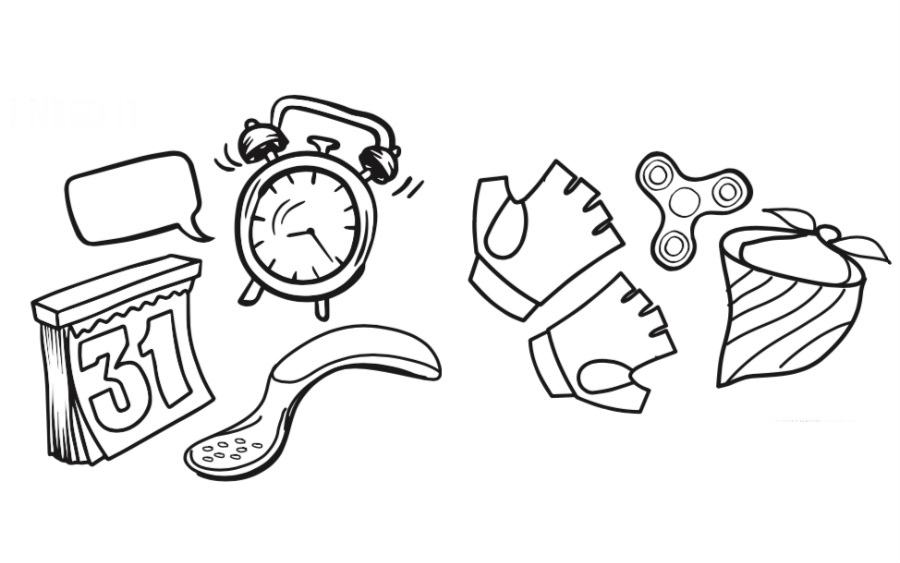
Assistive technology: what exactly is that, do I need it and how do I get it?
By Sam Paior, The Growing Space
Put simply, assistive technology is the physical ‘stuff’ you need because of your disability.
The “big ticket” assistive technology items are things like electric wheelchairs, cochlear implants, electric beds, hoists and eye gaze systems, and all of these often more specialised and customised items can only be purchased with NDIS funds, and only if you have a therapist prescribe them and put them through the NIDS approvals system. These sorts of items (and you can find a full list on the NDIS website) are considered specialised or complex and if approved, the funds will be in your “Capital” budget in your NDIS Plan.
I’m not going into more details about those big items – as they are unique to each participant and need to go through internal NDIS approval processes. These items would generally, though not always, cost more than $5000.
What I want to talk about today, is the “stuff” that families and participants can purchase without specific NDIS approval, using your low risk assistive technology, or consumables and core budgets.
I’m talking about a moulded plastic spoon for someone who needs a spoon that’s easier to grip, or a bib for a school kid made out of school fabric, a talking alarm clock if you’re vision impaired, a visual timer to help someone with cognitive impairment, an app to build social stories, a tipping kettle, laminating pouches for all those visual schedules, a large print calendar, cup holder for your wheelchair, pick up stick thing, a replacement mobility cane, elastic shoelaces or bike gloves for a wheelchair user.
There are probably *thousands* of other things that might be covered under this – each person with disability will have different disability related needs to meet their goals.
This stuff can be purchased using a specific Assistive Technology budget line item in your plan, BUT, you can also purchase it through consumables in your CORE budget. If your plan is Agency managed, you can find Agency registered providers of AT stuff through the portal – you can even order stuff online (just Google “assistive technology NDIS shop”).
The rules basically state that the items need to be low risk – for example, even though bed poles are low cost, they can be super dangerous, so those must be prescribed individually by a professional.
DO I NEED AN OT TO SIGN OFF/APPROVE/APPLY FOR THESE LOW COST/LOW RISK AT ITEMS?
No, you don’t, but it might be a good idea to speak to an OT or other people with similar needs as your child about what stuff might be useful. A letter or email from your OT outlining some suggestions might also be useful as evidence if you’re ever audited.
As with all things NDIS, the stuff you buy must be “reasonable and necessary”. While a walking stick might be fun for a dress up costume for a party, unless you actually need it because of your disability, you really can’t spend your NDIS funds on it!
Check out https://www.ndis.gov.au/participants/home-equipment-and-supports/assistive-technology-explainedwfor more info. Here’s just one snippet from that web page:
“As outlined in the AT Complexity Classification document, the NDIA recognises some AT as low cost, low risk (Category 1) and participants who have AT identified in their plan will generally have funding in that plan for them to directly purchase a modest amount of this AT that is integral to meeting their plan goals. The Daily Adaptive Equipment (03_131_0103_1_1) line item under a participant’s CORE budget (Consumables support category) would be where they would claim these expenses.”
If you don’t have a CORE or Assistive Technology budget in your plan, this won’t work, and neither will it work if you are both Agency Managed, AND your planner did not include Consumables at the back end of your plan (you will not be able to tell this by looking at your plan and will need to call NDIS to confirm one way or the other).
HOW MUCH CAN I SPEND?
Currently the limit appears to be $1500 per item, but stay tuned to the Growing Space Facebook page @thegrowingspaceaustralia as I’ve heard rumblings of changes afoot and we’ll be sure to announce them as soon as we know!
WHAT ABOUT “SENSORY ITEMS”?
Sensory items are things like chewable jewellery, or fidget spinners or tight sensory undergarments. There are masses of these products available to help sensory seekers and others, often with autism, to self-regulate. Sometimes planners or LACs will say that sensory items are not claimable under NDIS plans. This is not necessarily correct, as the NIDS Act is very clear that disability related needs are to be funded. As you and I are not NDIS planner delegates, we actually have no way of legally determining what is or is not “Reasonable and Necessary” so we need to use the “Can I buy it?” list shared by the NDIS in the NDIS Guide to Self Management which you can (and should!) download at www.ndis.gov.au/participants/using-your-plan/self-management.
If you can check off each of the items on the list on this web page, then chances are you are able to claim the item. If you desperately need clarification, you’ll need to contact your LAC or the NDIS directly, but just a heads up – you will likely get an answer from someone who doesn’t have enough information to make a good answer.
MY PLAN MANAGEMENT PROVIDER IS BEING DIFFICULT!
Plan Managers try to ensure that participants and nominees don’t claim for items that are not allowed. Unfortunately, some have gone a little overboard, and demand an OT report for every item. They do this to protect you from having to pay stuff back on audit, and to protect themselves in case they can’t get that money back from you, so while it’s understandable, it’s a pain, and not how the NDIS should be working.
When you choose your Plan Manager, ask them some hairy questions about what they will or won’t approve as Low Cost Assistive Technology, and what hoops you might need to jump through to get your reimbursement – and keep calling around until you get a Plan Manager that works for you!
And here’s a little tip too, in the latest NDIS price guide, one of the examples written is:
“- a $530 digital text player – the provider would submit a payment request for 5.3 units of 03_220300911_0113_1_1 (Low Cost AT for Vision Related AT) at total cost of $530″
So, if your Plan Manager says you can’t get anything above $100/item or $500/ item, please let them know, they’ve got it wrong!! And tell them Sam Said So, or just politely point them to the new AT Price Guide for clarification.
If you’re looking for ideas on Low Cost Assistive Technology and what might help your child, we put together a huge list with the help of dozens of families and disabled people at www.thegrowingspace.com.au/assistive-tech-huge- ideas-list/ which sorts more than 300 items and ideas into categories.
And finally, when trying to decide what you can and can’t claim, always start off by asking yourself “Would I buy this anyway, if my child wasn’t disabled?”, and if you’d probably buy it anyway, chances are you shouldn’t be claiming it from their NDIS plan.
For more information about making the most of your NDIS, check out The Growing Space’s ever growing library of free and subscription based resources written for carers and people with disability at www.TheGrowingSpace.com.au/library
Subscription to this resource can be claimed from Self or Plan Managed NDIS plans from Core of CB support budgets.








